Video: How to choose the best bike lights for you
What to look for in bike lights, wherever you ride
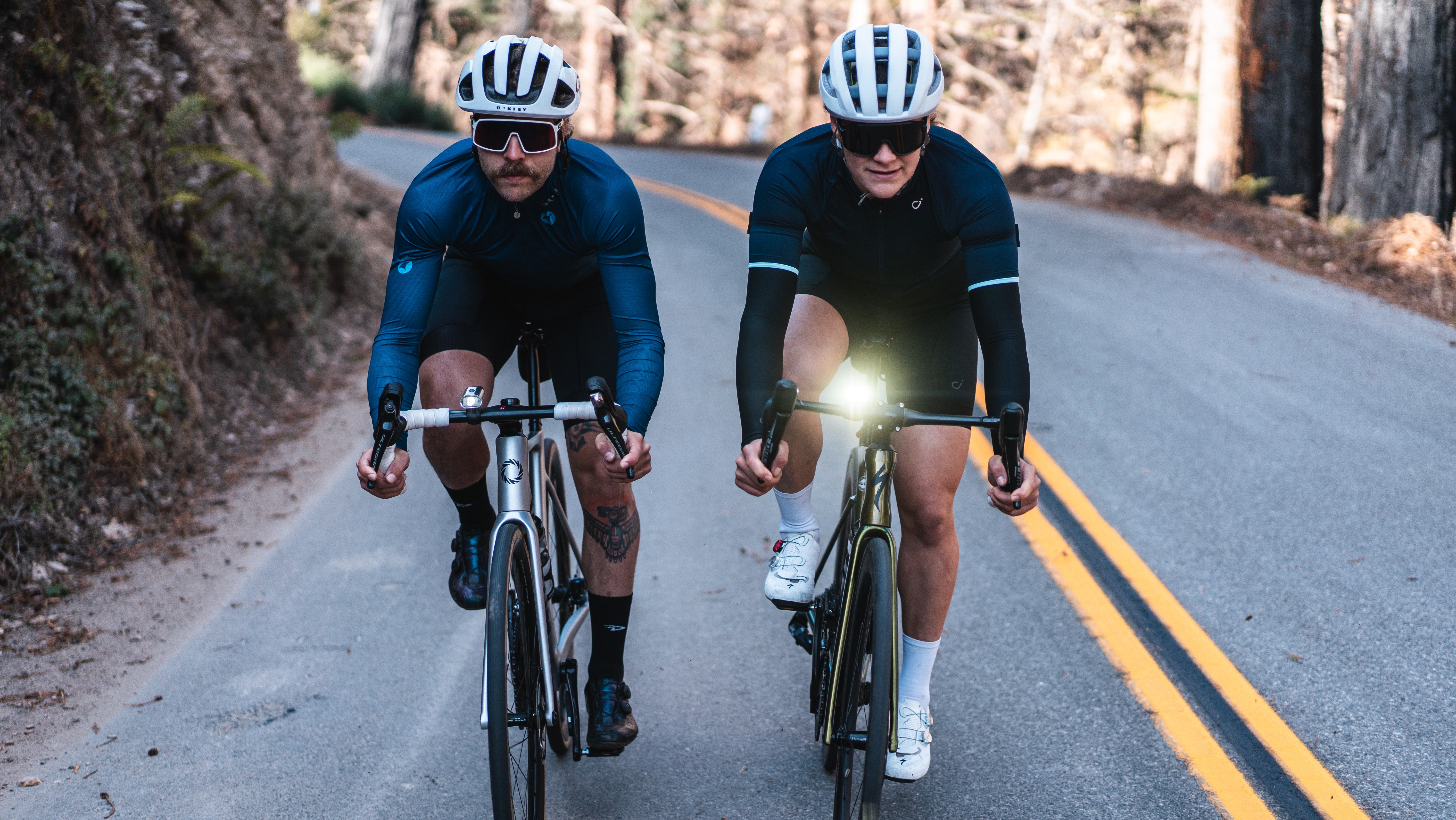
With dark nights, lighting is essential to see where you’re going, to be seen by other road users and to comply with the law.
But the lights that you need will be very different depending on where you’re riding. In this video, we tell you all you need to know about lights, what you need and how to use them and we highlight below some great options from Lezyne for every type of riding.
Which lights are best for where I’m riding?
For road riders who are heading into areas without street lighting, we’d recommend a front light with a minimum of 500 lumens output. That should be enough to let you spot obstacles in front of you without slowing you down too much.
At the rear, 30 lumens will ensure that you can be spotted, while extra reflectives on your clothing and/or rear reflectors will help too. Reflective shoes or pedal reflectors are useful as they attract attention as they move than more static reflective areas elsewhere on you or your bike.
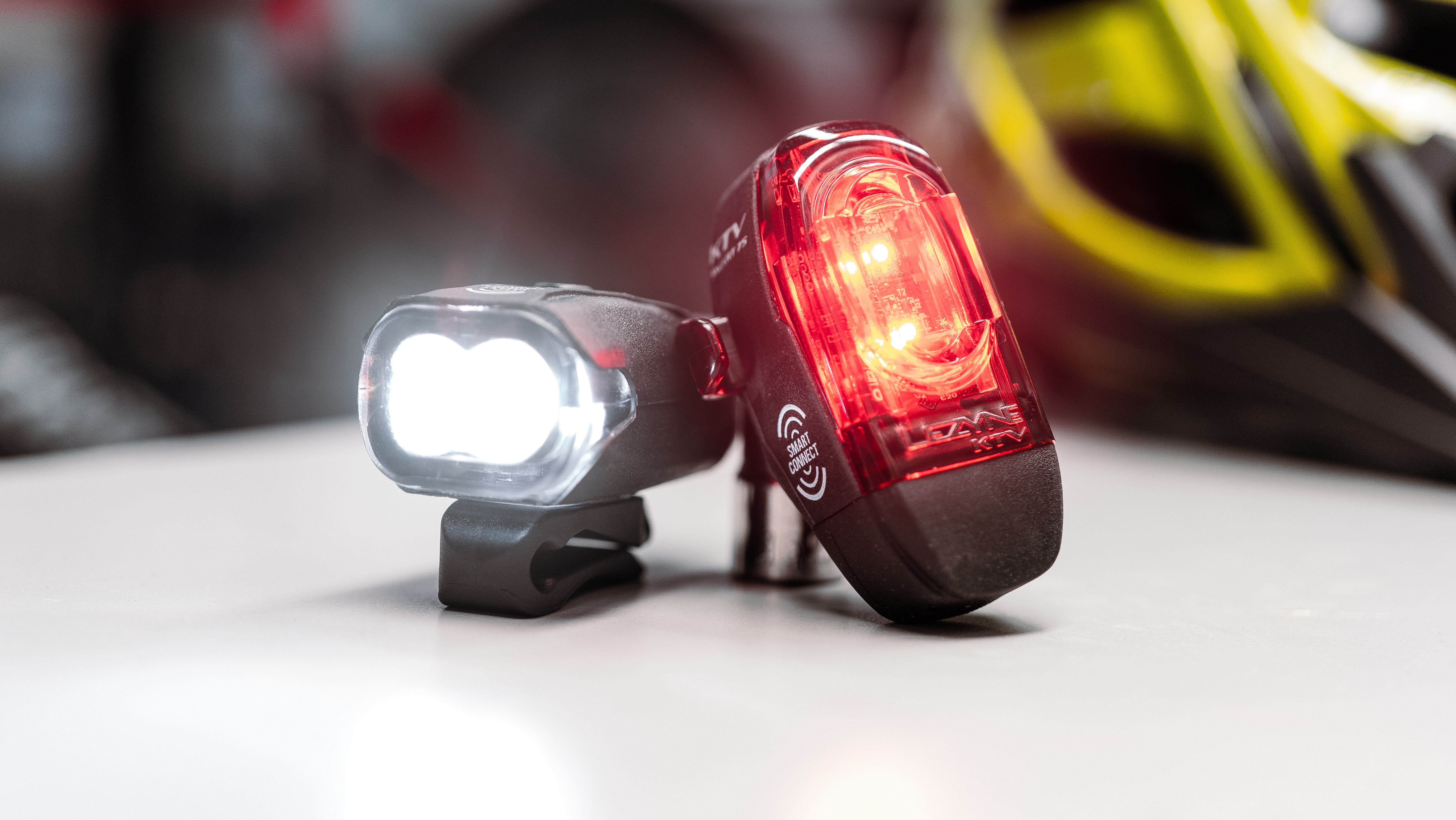
Take a look at the Lezyne Connect Smart 1000 XL / KTV Smart light pair as a great combination with plenty of capability. We’ve more info below on what the “Smart” bit means.
Gravel riders need more front illumination, as there are more obstacles to negotiate off road. We’d recommend at least 800 lumens, although if you’re riding more technical off-road you may want more, comparable to mountain bikers, for whom we’d suggest 1000 lumens or more.
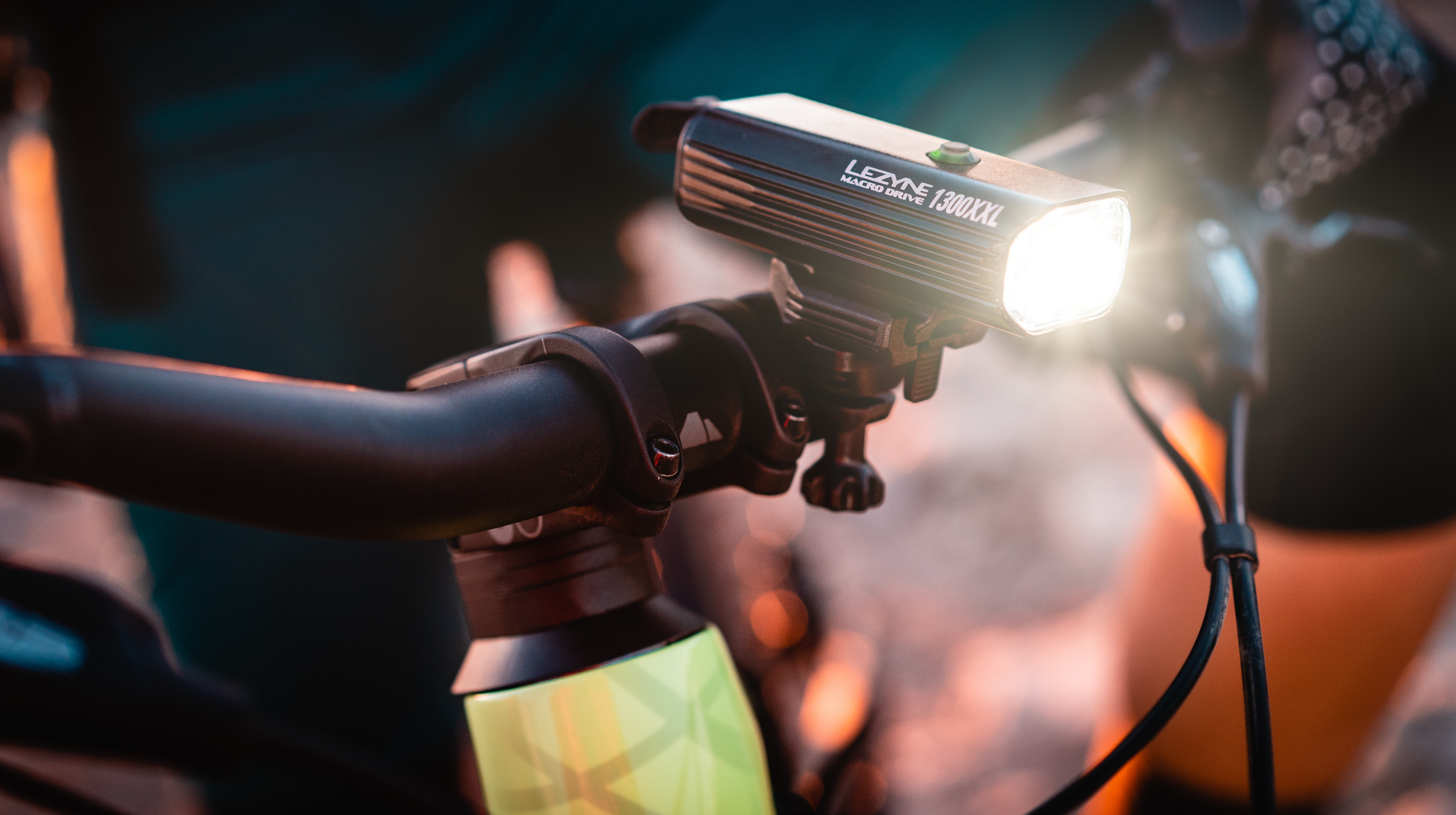
The Lezyne Micro Pro 800XL / Strip Drive pair is a good option for gravel that’s compact but gives plenty of illumination for gravel riders, while the Macro Drive 1300 XXL will give even more light for mountain bikers and more technical gravel with long run times even at peak illumination.
Commuters on lit roads need lights that help them to be seen by other road users. They can rely more on street lighting to see the road ahead. We’d suggest around 200 lumens at the front and 30 lumens at the rear minimum. Side illumination is also important for commuter lights, so look out for lights that cover a wide angle.
The Lezyne KTV Drive Pro Smart pair is a great option for commuters with a compact 200 lumen front light and 75 lumen rear light.
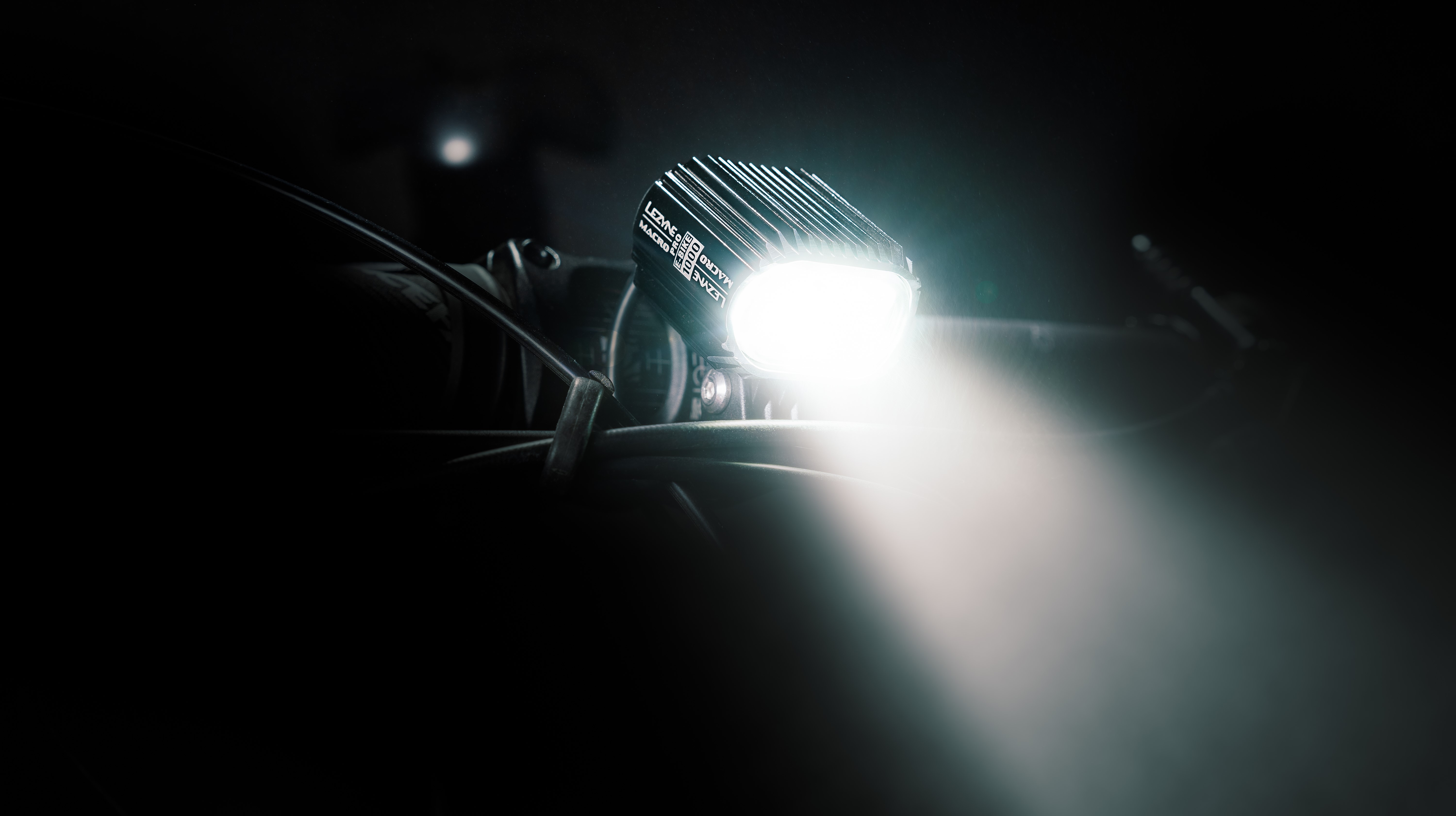
Finally, if you’re riding an electric bike, many systems let you wire lights into the main battery, saving you from needing to recharge separate batteries for the lights. Lezyne has the e-Bike Macro Drive 1000 which works with a range of e-bike batteries and gives plenty of illumination both for road riding and off-road e-biking. Note that you will need to seek assistance from your bike dealer to correctly wire in any e-bike lights driven directly from the bike’s battery system.
It’s worth bearing in mind that all lights have multiple modes and a brighter light can be dialled down if you don’t need as much illumination. You’ll get longer runtimes on lower settings, whereas sometimes the highest setting may only be sustainable for quite a short time before the battery is exhausted. A higher output light is likely to be heavier and take up more bar space though.
What features do I need?
Lezyne is one of the biggest brands and an innovator in lighting, its lights offering a range of added extras that make using them easier.
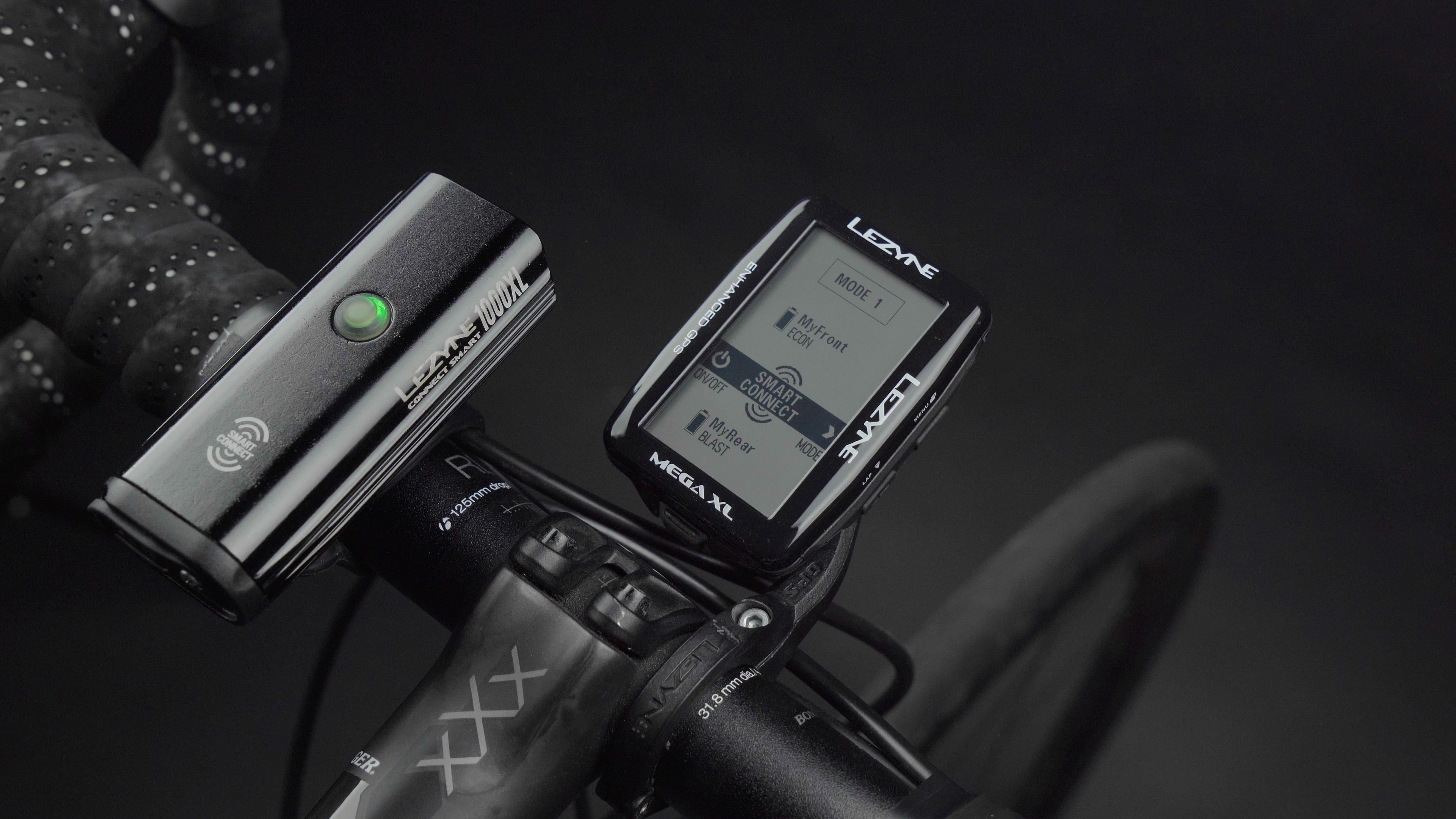
Lezyne Smart Connect lets you link front and rear lights and control and configure them both via the Lezyne LED Ally app. The control button on the front light will adjust the rear light too, so it’s much easier to change modes as you ride.
You can also use Lezyne’s Race Mode to use your light like full beam and dipped beam car headlights, toggling between the two without needing to change through all the other available mode options. It’s useful for trail riders who need the brightest setting for a downhill run but want to conserve battery when riding more slowly.
Almost all modern lights use LEDs and are rechargeable, but it’s worth checking. Most use a micro USB connection, although USB C is becoming more common. Some have unique USB cables that work only with the specific light.
Do I need daytime lighting?
We’d also recommend running lights during the day. Modern cars have to have daytime lights and it’s a great idea for cyclists too, to ensure that they are easier to see, particularly at dawn and dusk or in the winter when the sun can be low in the sky.
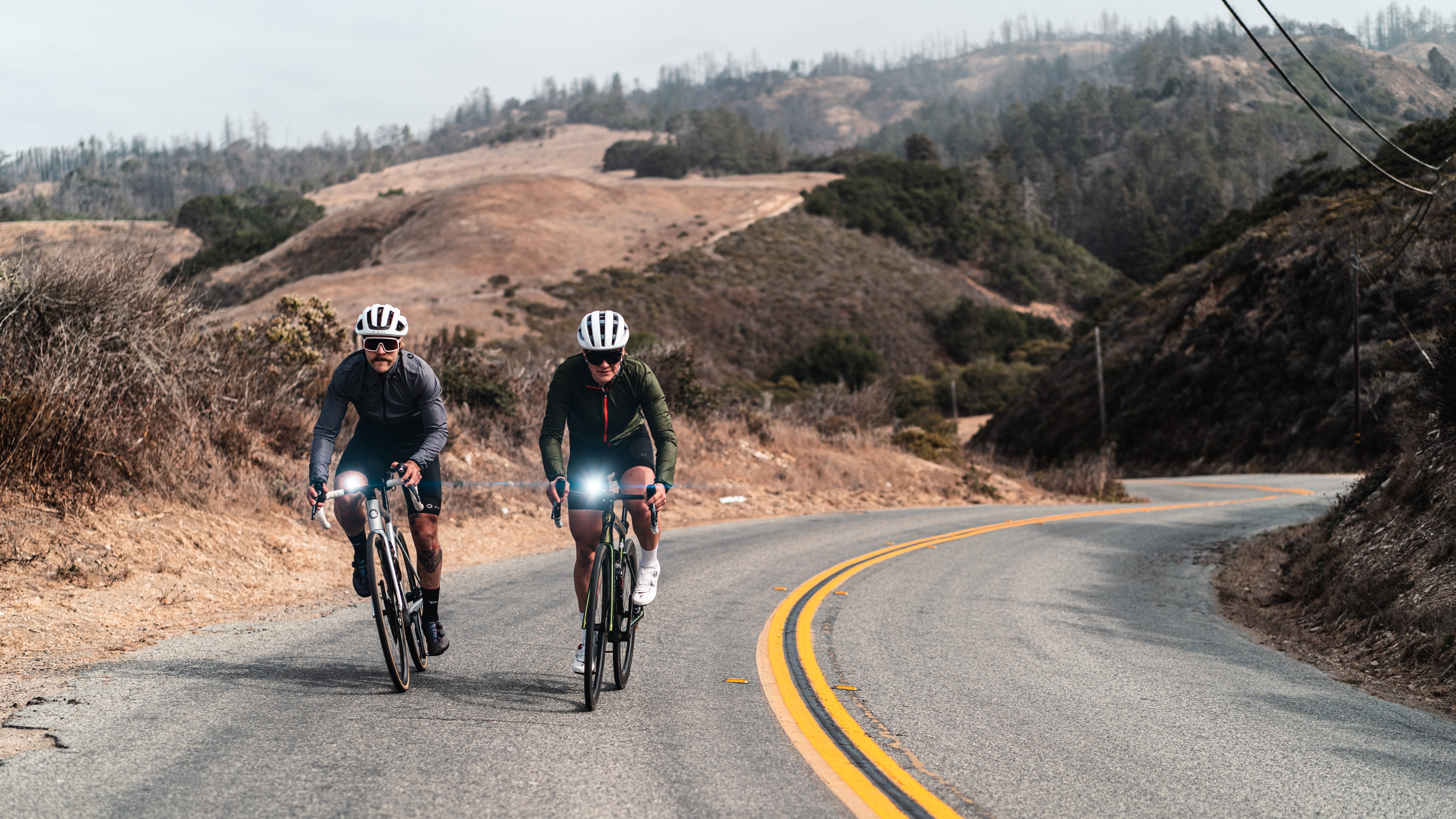
Most lights will have at least one flashing mode, which for daytime use can be very bright. You often get an always-on pulsed mode too. An advantage is that flashing modes substantially increase the light’s runtime.
Should I use two rear lights?
There are benefits in running two rear lights, as there’s less likelihood that both will run out of battery, particularly if you run one flashing. You can also point them at slightly different angles to up your side-on profile. Running a flashing and a constant rear light in tandem can make it easier for a driver approaching from the rear to work out how close you are.
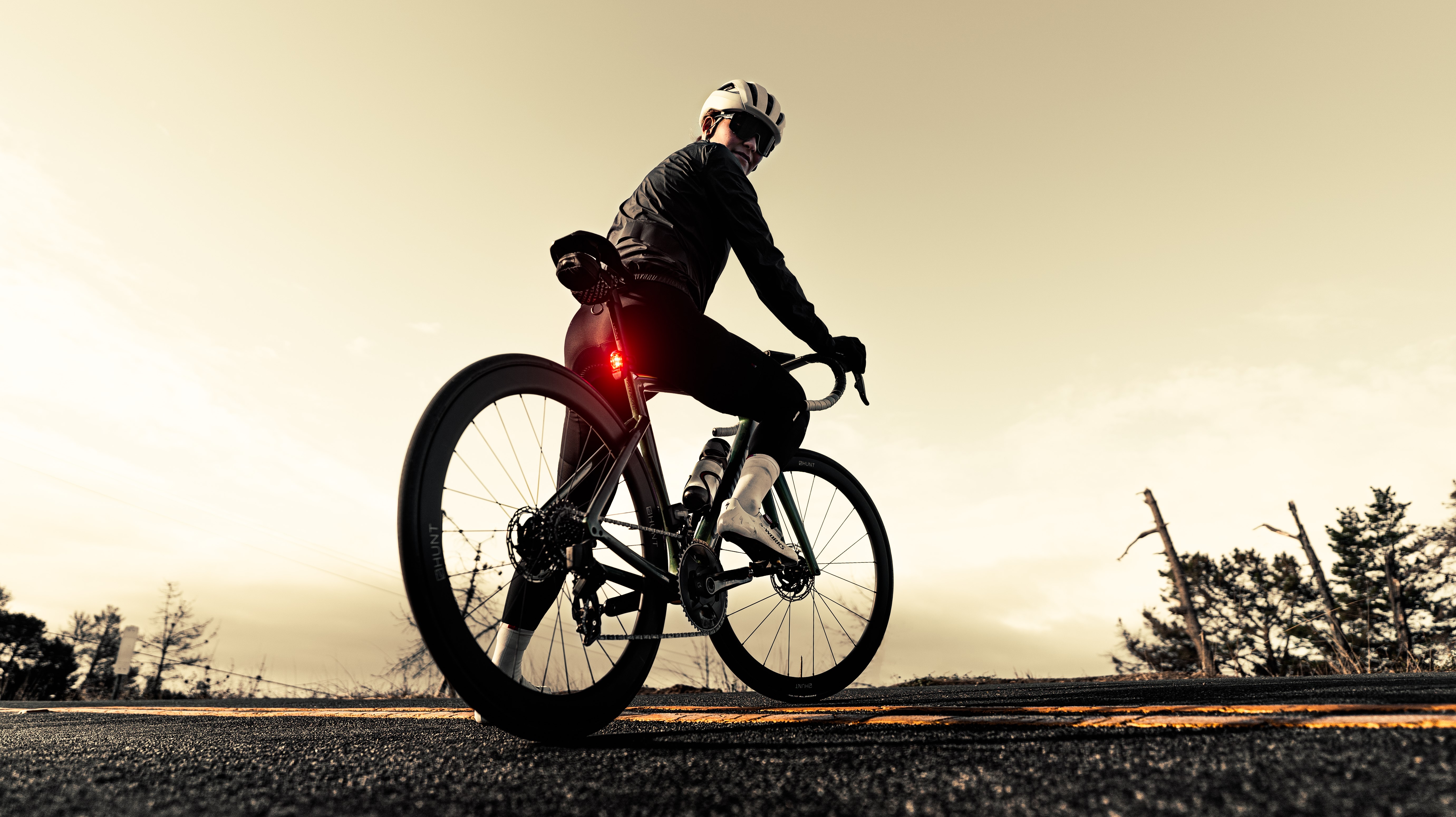
Rear lights aren’t so important off-road, although they help following riders to see where you’re going. Often off-road riding will include some road stretches as well. That means that you need a rear light and we’d suggest 30 lumens minimum again.
What does the law say?
In the UK, once it’s dark you must run a front and rear light, they must conform to the legal standards and they must either be mounted centrally or to the offside of your bike. They can be up to 1.5m from the ground, so although a helmet light can help, you’d need lights mounted on your bike too.
In the US, the legislation varies by state, but if you’re riding after dark or when visibility is poor you need a white front light and a red rear one.
In general EU requirements and UK law are the same, but in Germany your lights must conform to StVZO regulations, which govern the shape of the emitted beam to ensure that you don’t dazzle other road users. That’s why Lezyne doesn’t sell some of its lights in Germany and marks up its lights and packaging to indicate that they’re StVZO compliant.
What’s the impact of lighting pattern?
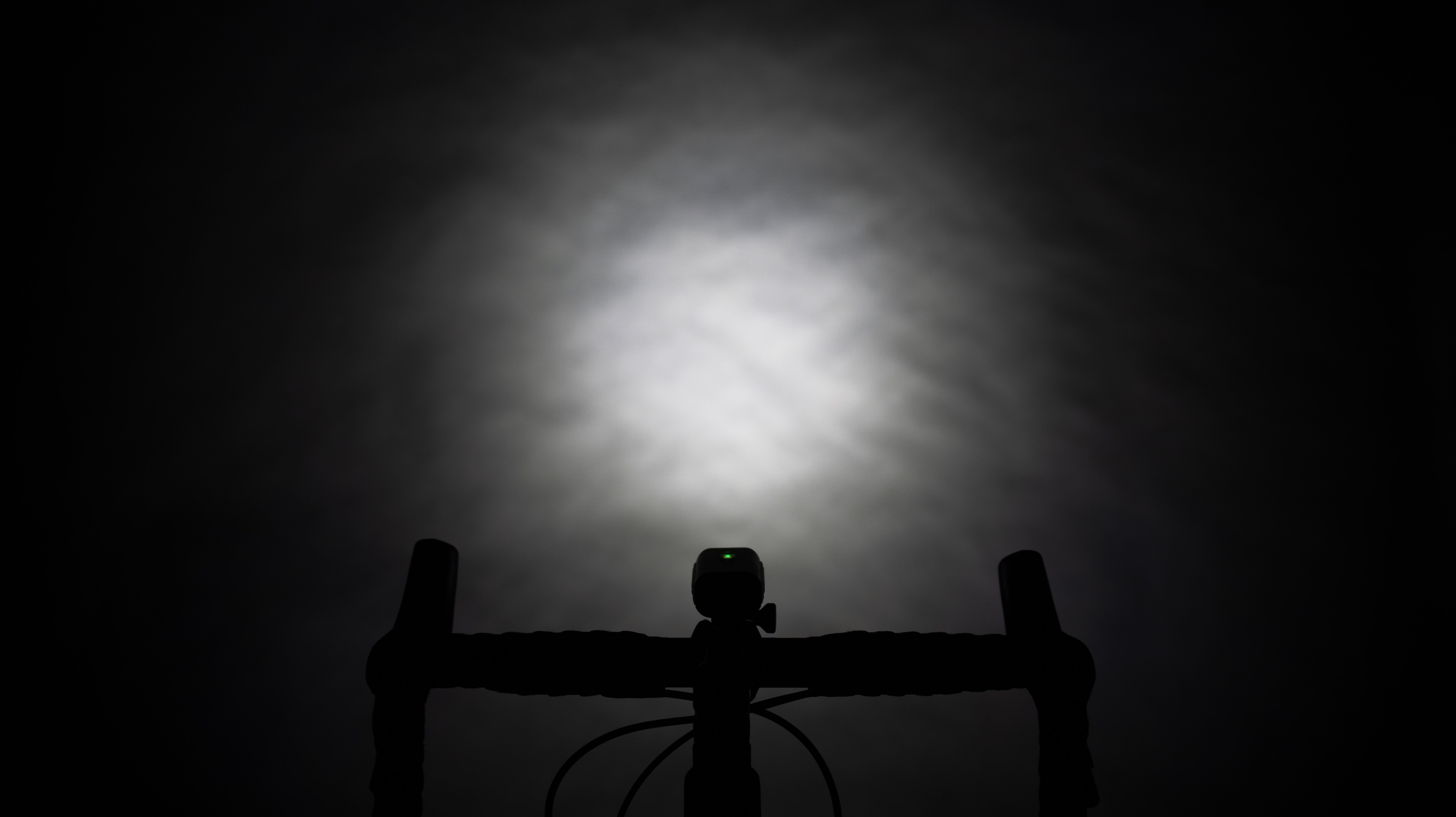
It’s worth considering the lighting pattern provided by your front light too. Some lights have more of a spot beam, whereas others give a wider spread. Many higher powered lights include multiple LEDs and lenses to give both a spot and a spread beam.
For off-road riding, two front lights can often be useful, one to provide a spot beam and the other a wider spread. A helmet mounted spot light can be especially useful to help see the trail ahead.
What lights does Lezyne offer?
Lezyne makes a huge range of lights. At the front it’s got lights from high powered units with up to 1800 lumens output, right down to compact 15 lumen city lights, while at the rear you can get lights with flashing modes with up to 300 lumens and the Laser Drive even shines laser lines onto the road surface to help deter close passes. We’ve got individual reviews of a wide range of Lezyne lights here on Cyclingnews.
Lezyne has loads of other high quality cycling accessories from pumps and tools, right through to cycling computers. Check out our guide to Lezyne road accessories or the complete range of Lezyne products on the Lezyne website.
Get The Leadout Newsletter
The latest race content, interviews, features, reviews and expert buying guides, direct to your inbox!
Paul has been on two wheels since he was in his teens and he's spent much of the time since writing about bikes and the associated tech. He's a road cyclist at heart but his adventurous curiosity means Paul has been riding gravel since well before it was cool, adapting his cyclo-cross bike to ride all-day off-road epics and putting road kit to the ultimate test along the way. Paul has contributed to Cyclingnews' tech coverage for a few years, helping to maintain the freshness of our buying guides and deals content, as well as writing a number of our voucher code pages.